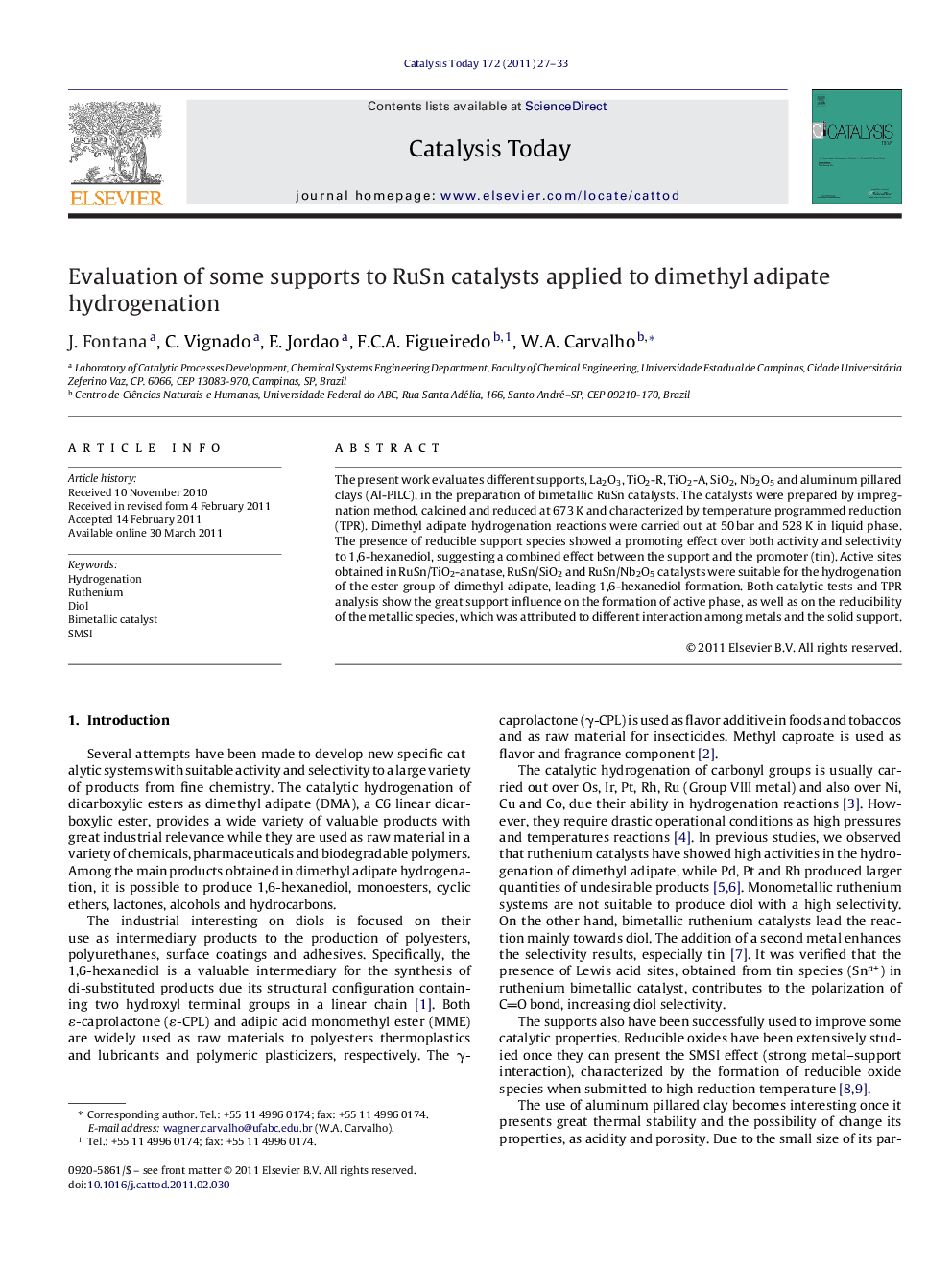| Article ID | Journal | Published Year | Pages | File Type |
|---|---|---|---|---|
| 55680 | Catalysis Today | 2011 | 7 Pages |
The present work evaluates different supports, La2O3, TiO2-R, TiO2-A, SiO2, Nb2O5 and aluminum pillared clays (Al-PILC), in the preparation of bimetallic RuSn catalysts. The catalysts were prepared by impregnation method, calcined and reduced at 673 K and characterized by temperature programmed reduction (TPR). Dimethyl adipate hydrogenation reactions were carried out at 50 bar and 528 K in liquid phase. The presence of reducible support species showed a promoting effect over both activity and selectivity to 1,6-hexanediol, suggesting a combined effect between the support and the promoter (tin). Active sites obtained in RuSn/TiO2-anatase, RuSn/SiO2 and RuSn/Nb2O5 catalysts were suitable for the hydrogenation of the ester group of dimethyl adipate, leading 1,6-hexanediol formation. Both catalytic tests and TPR analysis show the great support influence on the formation of active phase, as well as on the reducibility of the metallic species, which was attributed to different interaction among metals and the solid support.
Graphical abstractFigure optionsDownload full-size imageDownload high-quality image (105 K)Download as PowerPoint slideHighlights► Hydrogenation of dimethyl adipate to 1,6-hexanediol. ► SMSI modify both catalytic activity and selectivity of hydrogenation reaction. ► The use of pillared clays leads to conversions typically higher than 95%. ► The presence of reducible support species showed a promoting effect over selectivity. ► Active sites obtained from RuSn/Nb2O5 were suitable for the hydrogenation.
